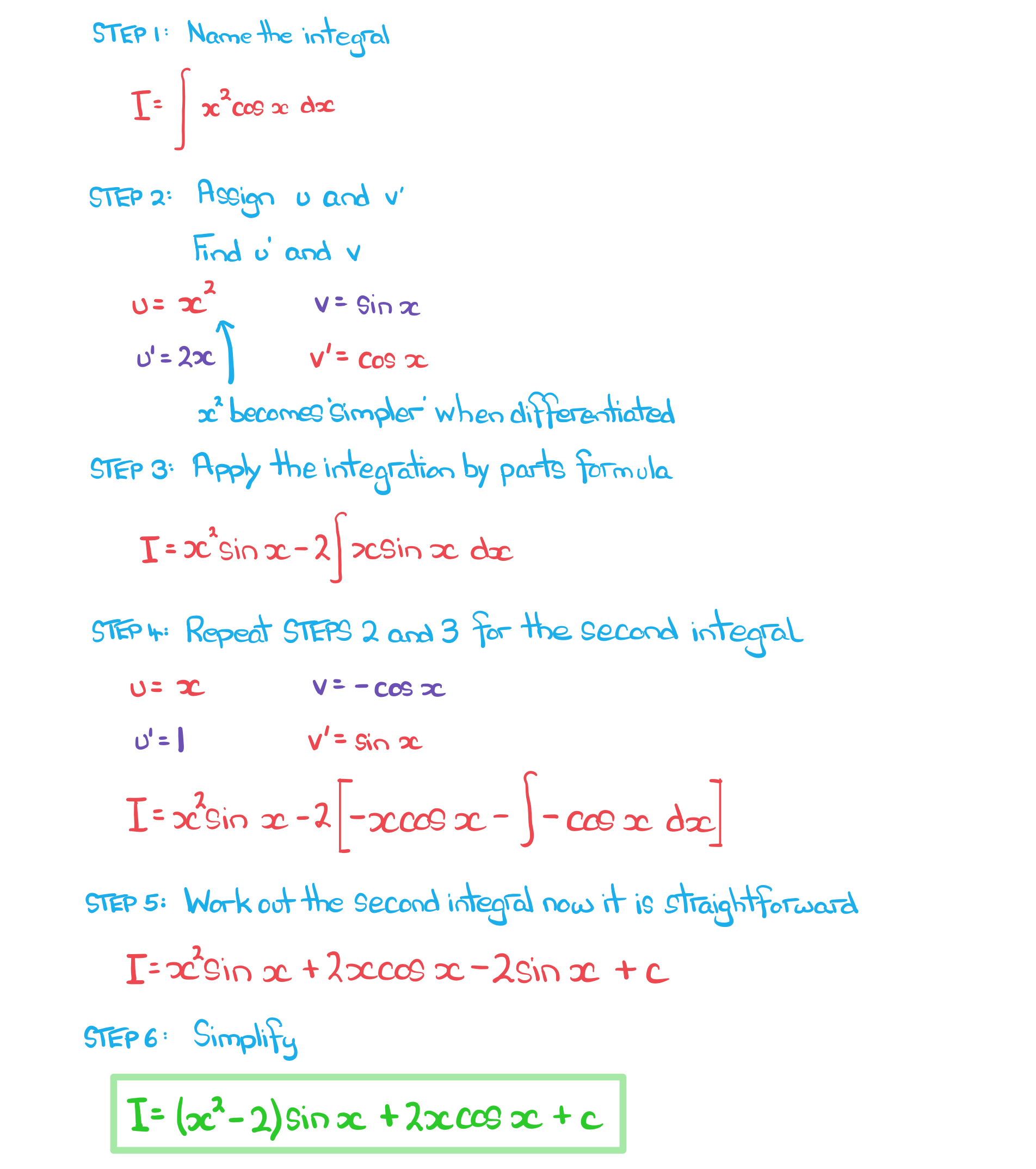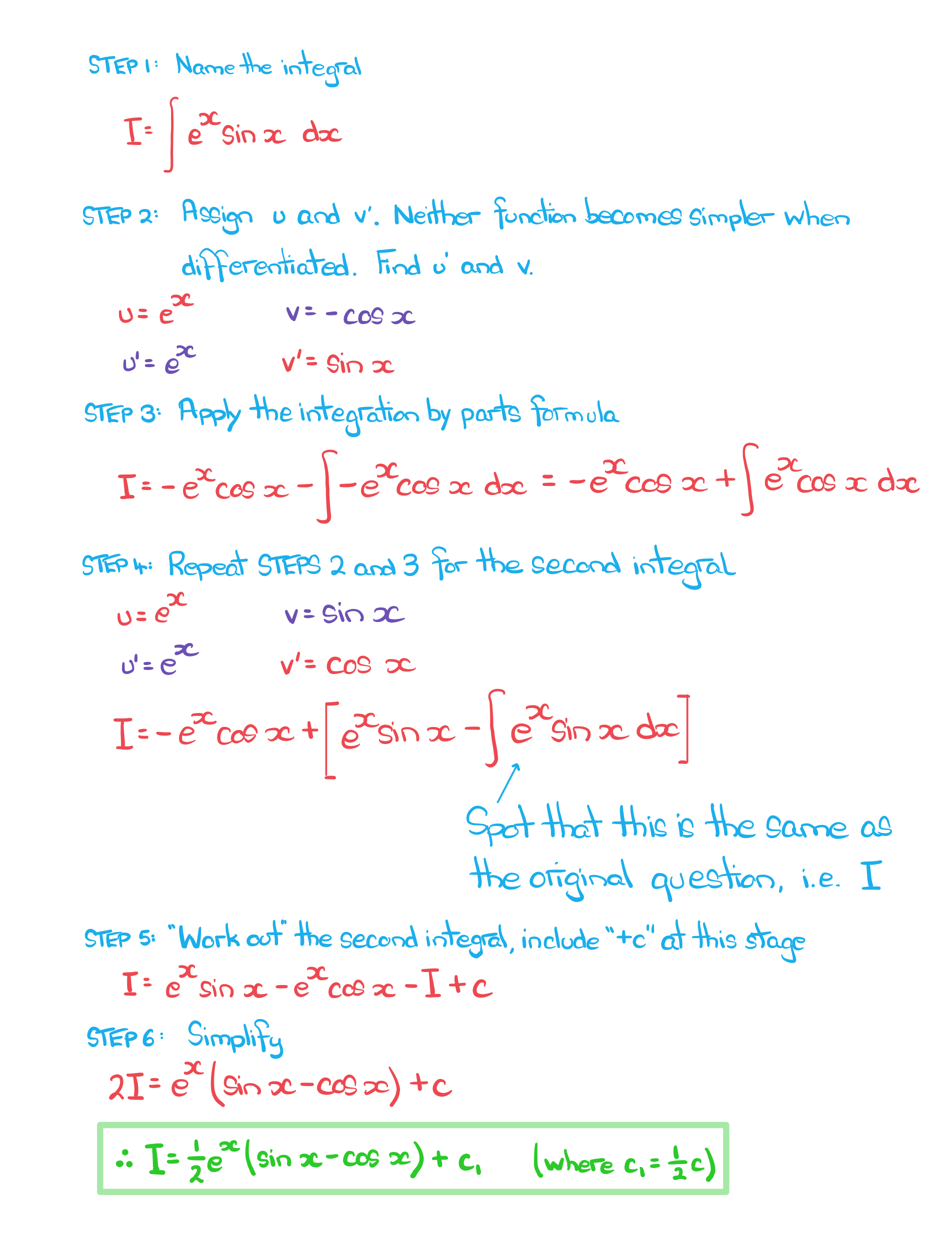Integration by Substitution
What is integration by substitution?
- Integration by substitution is used when an integrand where reverse chain rule is either not obvious or is not spotted
- in the latter case it is like a “back-up” method for reverse chain rule
How do I use integration by substitution?
- For instances where the substitution is not obvious it will be given in a question
- e.g. Find
using the substitution
- Substitutions are usually of the form
- in some cases
and other variations are more convenient
- as these would not be obvious, they would be given in a question
- if need be, this can be rearranged to find
in terms of
- Integration by substitution then involves rewriting the integral, including “
” in terms of
STEP 1
Name the integral to save rewriting it later
Identify the given substitution
STEP 2
Find and rearrange into the form
such that (some of) the integral can be rewritten in terms of
STEP 3
If limits are involved, use to change them from
values to
values
STEP 4
Rewrite the integral so everything is in terms of rather than
This is the step when it may become apparent that is needed in terms of
STEP 5
Integrate with respect to u and either rewrite in terms of or apply the limits using their
values
- For quotients the substitution usually involves the denominator
- It may be necessary to use ‘adjust and compensate’ to deal with any coefficients in the integrand
- Although
can be treated like a fraction it should be appreciated that this is a ‘shortcut’ and the maths behind it is beyond the scope of the IB course
Exam Tip
- If a substitution is not given in a question, it is usually because it is obvious
- If you can't see anything obvious, or you find that your choice of substitution doesn't reduce the integrand to something easy to integrate, consider that it may not be a substitution question
Worked Example
Use the substitution to evaluate
.
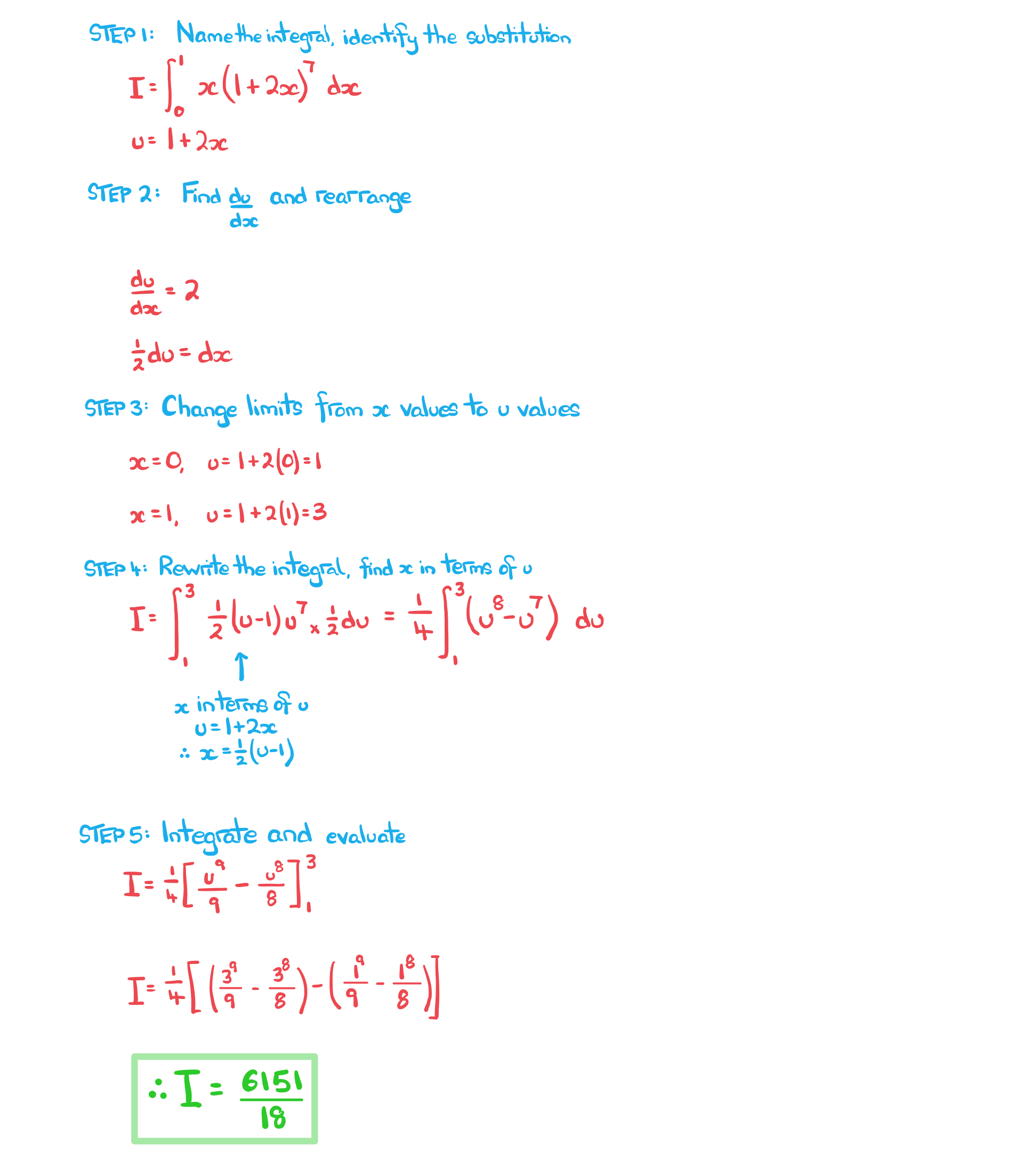
Integration by Parts
What is integration by parts?
- Integration by parts is generally used to integrate the product of two functions
- however reverse chain rule and/or substitution should be considered first
- e.g.
can be solved using reverse chain rule or the substitution
- e.g.
- Integration by parts is essentially ‘reverse product rule’
- whilst every product can be differentiated, not every product can be integrated (analytically)
- however reverse chain rule and/or substitution should be considered first
What is the formula for integration by parts?
- This is given in the formula booklet alongside its alternative form
How do I use integration by parts?
- For a given integral
and
(rather than
and
) are assigned functions of
- Generally, the function that becomes simpler when differentiated should be assigned to
- There are various stages of integrating in this method
- only one overall constant of integration (“+c”) is required
- put this in at the last stage of working
- if it is a definite integral then “+c” is not required at all
STEP 1
Name the integral if it doesn’t have one already!
This saves having to rewrite it several times – I is often used for this purpose.
e.g.
STEP 2
Assign and
.
Differentiate to find
and integrate
to find
e.g.
STEP 3
Apply the integration by parts formula
e.g.
STEP 4
Work out the second integral,
Now include a “+c” (unless definite integration)
e.g.
STEP 5
Simplify the answer if possible or apply the limits for definite integration
e.g.
- In trickier problems other rules of differentiation and integration may be needed
- chain, product or quotient rule
- reverse chain rule, substitution
Can integration by parts be used when there is only a single function?
- Some single functions (non-products) are awkward to integrate directly
- e.g.
,
,
,
- e.g.
- These can be integrated using parts however
- rewrite as the product ‘
’ and choose
and
- 1 is easy to integrate and the functions above have standard derivatives listed in the formula booklet
- rewrite as the product ‘
Exam Tip
- If
or one of the inverse trig functions are one of the functions involved in the product then these should be assigned to "
" when applying parts
- They are (realtively) easy to differentiate (to find
) but are awkward to integrate
- They are (realtively) easy to differentiate (to find
Worked Example
a) Find .
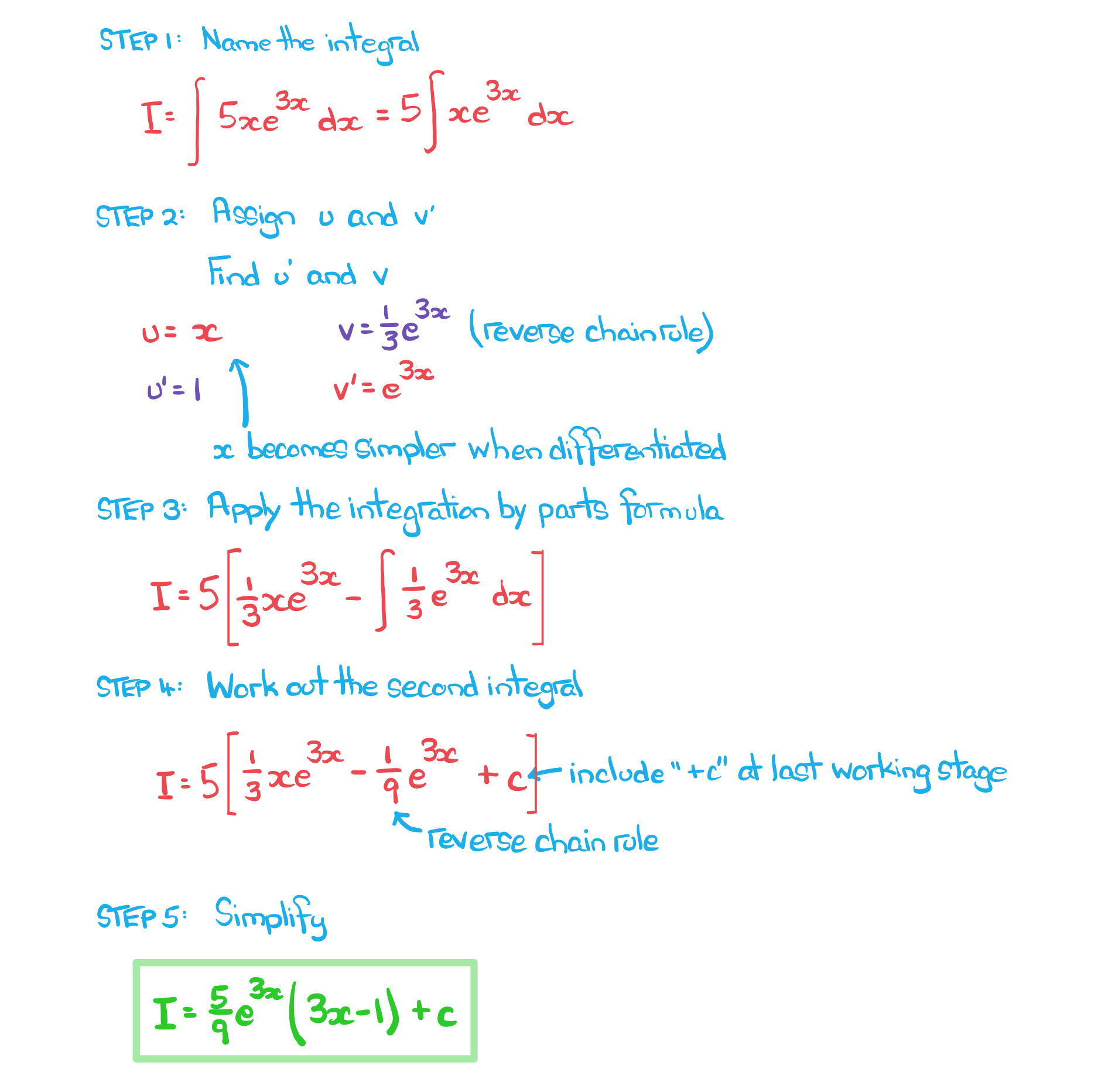
b) Show that .
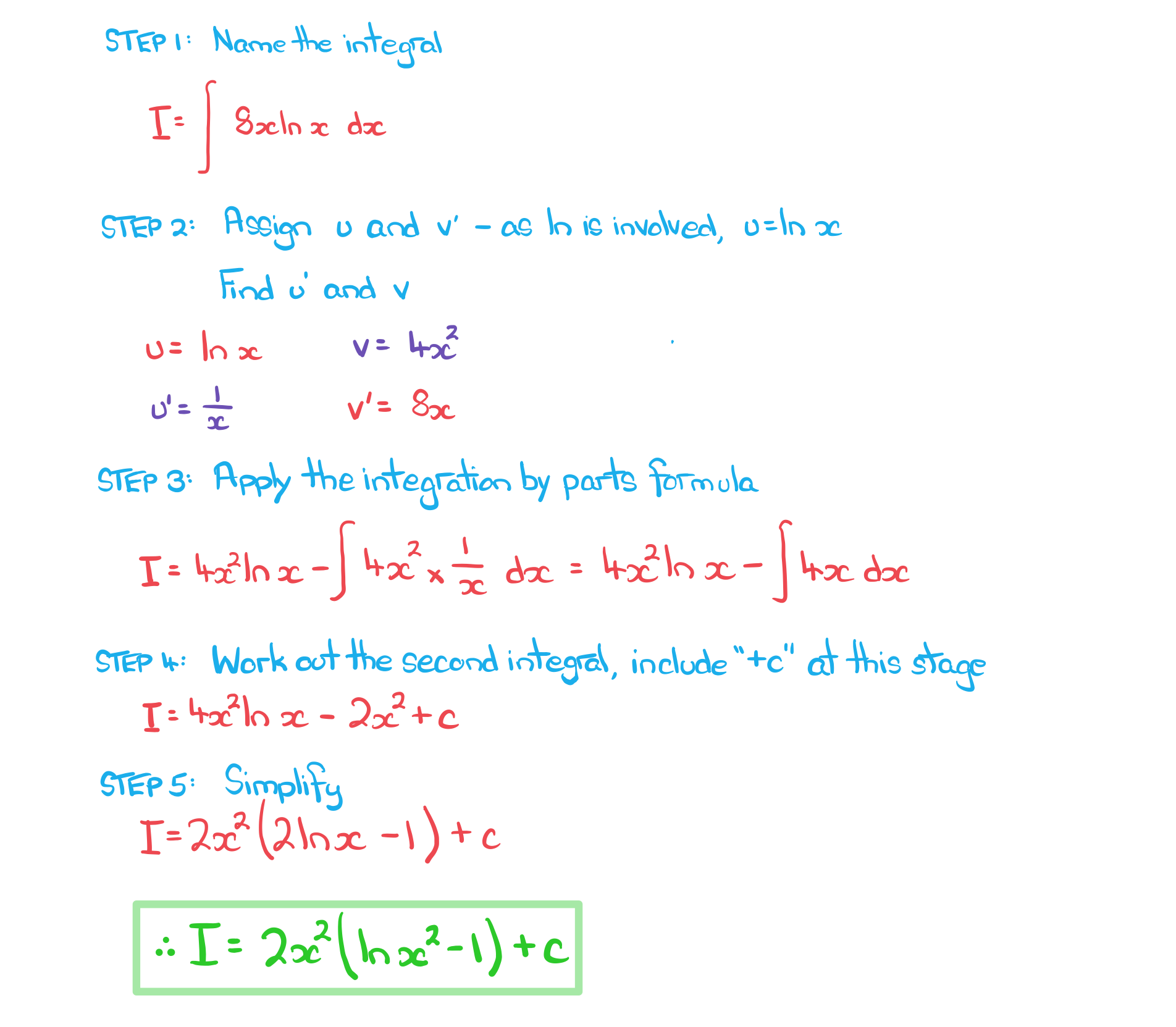
Repeated Integration by Parts
When will I have to repeat integration by parts?
- In some problems, applying integration by parts still leaves the second integral as a product of two functions of
- integration by parts will need to be applied again to the second integral
- This occurs when one of the functions takes more than one derivative to become simple enough to make the second integral straightforward
- These functions usually have the form
How do I apply integration by parts more than once?
STEP 1
Name the integral if it doesn’t have one already!
STEP 2
Assign and
. Find
and
STEP 3
Apply the integration by parts formula
STEP 4
Repeat STEPS 2 and 3 for the second integral
STEP 5
Work out the second integral and include a “+c” if necessary
STEP 6
Simplify the answer or apply limits
What if neither function never becomes simpler when differentiating?
- It is possible that integration by parts will end up in a seemingly endless loop
- consider the product
- the derivative of
is
- no matter how many times a function involving
is differentiated, it will still involve
- no matter how many times a function involving
- the derivative of
is
would then have derivative
, and so on
- no matter how many times a function involving
or
is differentiated, it will still involve
or
- consider the product
- This loop can be trapped by spotting when the second integral becomes identical to (or a multiple of) the original integral
- naming the original integral (
) at the start helps
then appears twice in integration by parts
- e.g.
whereare parts of the integral not requiring further work
- e.g.
- It is then straightforward to rearrange and solve the problem
- e.g.
- e.g.
- naming the original integral (
Worked Example
